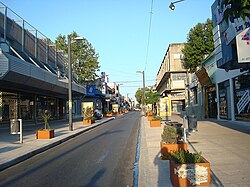Las Piedras | |
|---|---|
City and municipality | |
 The Obelisc of Las Piedras | |
| Coordinates: 34°43′0″S56°13′0″W / 34.71667°S 56.21667°W | |
| Country | |
| Department | |
| Founded | 1744 |
| Elevation | 81 m (266 ft) |
| Population (2011 Census) | |
• Total | 71,268 |
| • Demonym | pedrense |
| Time zone | UTC -3 |
| postal code | 90200 |
| Dial plan | +598 2 (+7 digits) |
Las Piedras is a city in the Canelones Department of Uruguay. As of the census of 2011, it is the seventh most populated city of the country. It gives the name to the municipality to which it belongs.





